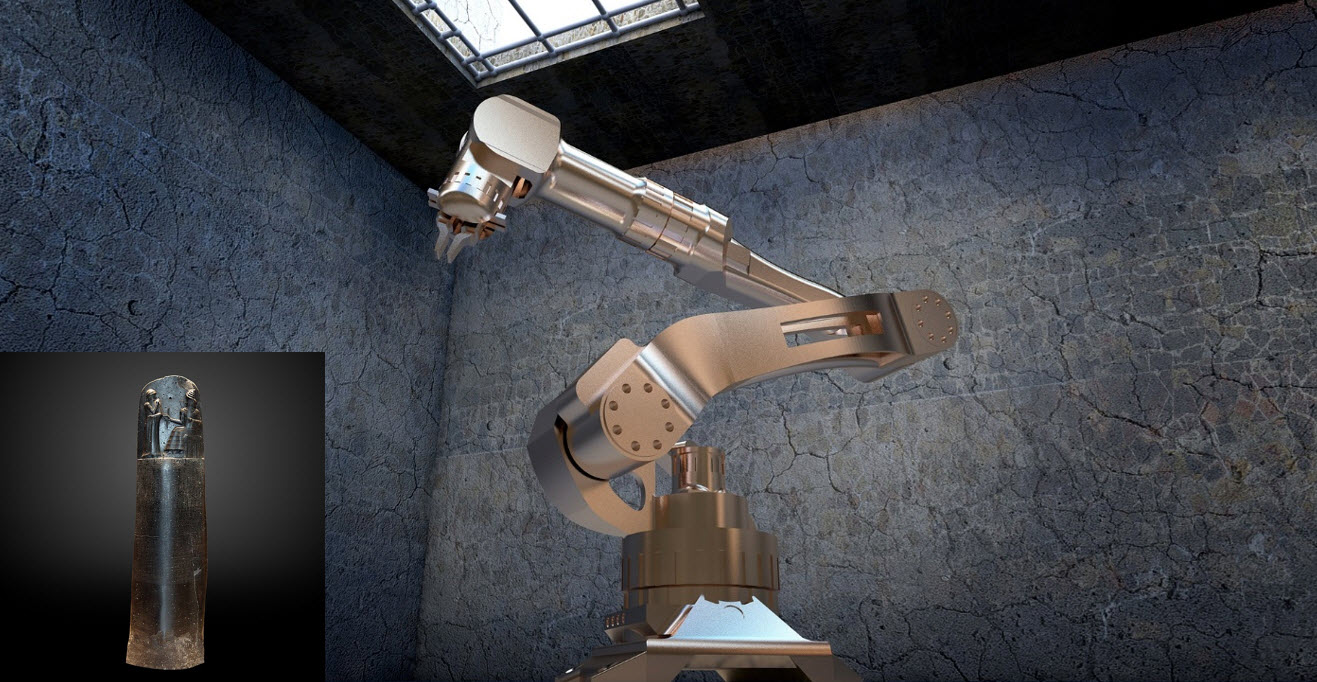Insuring Artificial Intelligence

About 120 years ago, archaeologists digging around in present-day Iran unearthed 3 pieces of carved rocks that fit together in what is called a diorite stele. The top has ornate graphical carvings. But the rest of the stele was the most interesting part. Carved into the rock was over 4000 lines of Babylonian cuneiform describing a system of laws. These laws were dictated by Hammurabi (1792-1750 BC). Without using the term, several of the laws appear to define the concept of insurance between customers and vendors. The art of formally covering risk, fault and costs was born. The stele moved around during various conquests, but currently sits in the Louvre Museum for all to see. The idea to protect things with insurance is very old indeed.

I am not sure when the idea came about to charge premiums for insurance, but today, of course, almost anything can be insured if you are willing to pay for it. Typically, people are mainly concerned about insuring health, safety, possessions and wealth. But there are stories of entertainers insuring their voice or body parts. There is even a company that will insure against alien abduction. I am not sure how one makes a claim on that policy or what proof they need to present. I alone have 9 ordinary insurance policies paid by myself or subsidized or paid for by my company.
How big is the insurance business? According to Statista Research Department, the value of gross premiums generated by the insurance industry in 2019 globally amounted to approximately 5.03 trillion U.S. dollars. To put that into perspective, that number is larger than the GDP of Japan, the third highest of the world behind US and China.
Today, insurance companies are exploring and starting to offer insurance for AI systems against failure. When I heard about that, I had some thoughts about elements that are probably going to be needed for success. Based solely on my past role of supporting requirements tools and being involved in DO-254 and ISO26262 activities that put processes in place for the safety of aircraft and cars, I think these elements are worth exploring:
- Standards. Based on safety-critical standards of today, I can envision a standard for developing AI software and hardware. These types of standards allow a uniform way to spell out quality and safety processes that the entire industry can apply. It is in the best interest of the insurance industry to organize and help drive this standardization because this makes certification easier.
- Tracing. The ability to trace how an AI algorithm or system arrived at the answer it did is critical for debugging mistakes and to show internal and external organizations how a given input results in an output. Unfortunately, this typically requires extra code or hardware and many AI systems currently skip traceability. These systems must also be designed using requirements tools that can trace through high-level requirements, to software abstractions down through hardware implementations and testcases.
- Data. AI systems are only successful if the quality and quantity is sufficient to train and learn. Some sort of data metrics need to be in place. And, because data is often scarce, I see the rise of synthetic data techniques and tools.
- Simulation. Every level of abstraction in a system needs to be simulated for quality. Often, simulations tools themselves use machine learning to find outliers and tests to find unplanned conditions. These tools are often combined with coverage tools to provide testing metrics. These simulation results and metrics should also be tied into the requirements tool.
- Optimization. AI systems should learn from failure and the conditions and data that led to failure should cycled back to the learning environment. These datasets can also be used for predictive analysis to determine if a system is about to fail. This should also lead to more over-air hardware and software updates.
Because one of the many solutions that Siemens offers is the digitization of the factory, I can imagine a day when AI-driven machines are certified as industrial-grade by vendors and backed up by insurance policies. Insurance might be ancient, but I wanted to learn about the relatively new concept of insuring AI, particularly on the digital factory floor. Luckily, we have an expert on this at Siemens and he knows a really smart person involved in AI insurance. So, we all got together for a talk. Listen here.


